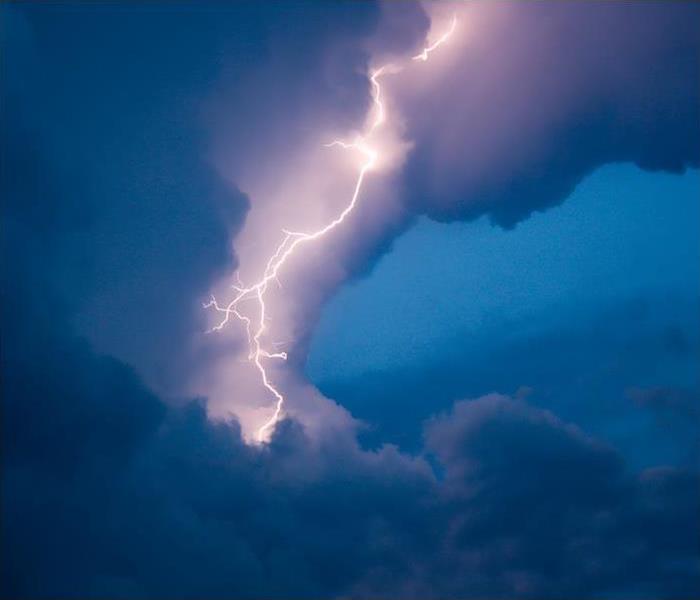The Myth of Heat Lightning
8/24/2021 (Permalink)
 SERVPRO of Conyers/Covington is here to help when lightning and storms cause damage to your home or business.
SERVPRO of Conyers/Covington is here to help when lightning and storms cause damage to your home or business.
There’s a certain kind of lightning which produces no thunder, and you’ve almost certainly heard the term for it. Your experience may vary, but for many it happens during something like an outdoor sporting event or day at the park when a clap of thunder would almost certainly mean a delay of game or an evacuation from the swimming area.
Everyone sees the lightning, kids look around nervously and an adult puts everyone at ease as play resumes: “Ah, it’s just *heat lightning*—nothing to worry about.”
Heat lightning. It makes perfect sense as an explanation—after all it’s summertime, it’s hot, everyone’s hot, why shouldn’t there be a thing called heat lightning?
The only thing about heat lightning is…well, the thing about it is there’s no such thing.
###What Is “Heat Lightning”?
The simple answer is this: It’s lightning that’s too far away for you to hear.
Yep, it’s plain old everyday lightning. On a clear day, you may be able to see lightning from a thunderstorm up to 100 miles away, but unless the lightning is within 10 to 15 miles of your location, you probably won’t hear it.
This, by the way, is also the indicator by which you know it’s necessary to vacate the pool or clear the field. Since lightning can strike 10 to 12 miles away from a thunderstorm, you know it’s not safe to engage in outdoor activities if you can still hear the thunder.
The lowest layer of the atmosphere, known as the troposphere, refracts and filters the sound, keeping it from traveling as far as it otherwise might. It’s especially difficult for the sound to travel far distances when temperatures moisture are high, and the air becomes more dense.
Think about a 6 p.m. August baseball field, and you’ll immediately feel the stickiness that creates this kind of obstacle course for the sound of thunder.
Other factors include the curvature of the earth over miles of distance, and the fact that the thunderclap may reflect off the earth’s surface and vary its path away from where you are.
Whatever the reason, the facts are twofold: (1) Heat lightning is simply a term that came to be used for far-off lightning whose sound isn’t reaching them, and (2) It is, in fact, safe to observe or remain outside, because the lightning is far enough away that it’s not a danger.
SERVPRO is here to help when lightning and storms cause damage to your home or business. Get in touch today to experience the difference of a full restoration.




 24/7 Emergency Service
24/7 Emergency Service